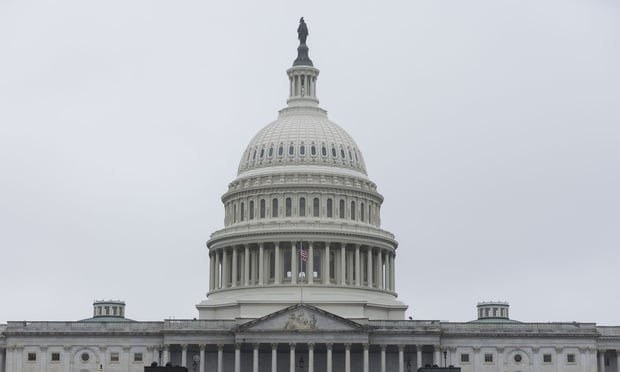Today’s group benefits broker is shorthanded, according to Pat Toner.
He says the product marketing for group voluntary products lacks in “sophistication” relative to marketing in other areas.
“The main reason for that is the data is not there to fully support brokers,” says Toner, the founder and CEO of Customer Benefit Analytics.
Conceptually, Toner says, it’s no news to brokers that different worker demographics would benefit from different voluntary offerings.
Nor are brokers unaware of the need to craft communications strategies targeted to specific market segments.
But bridging gap from conceptual to practical is easier said than done in today’s voluntary market.
That challenge is what motivated Toner to launch CBA almost three years ago after a successful career helping to lead Cigna’s group voluntary marketing segment. This year, CBA launched a proprietary analytics platform designed to arm brokers with data-driven strategies on who buys which voluntary products and, most importantly, why they make the decisions they do.
“The objective of any good broker – and, frankly, the key to succeeding in the voluntary market – is to get participants the benefits they need,” says Toner.
CBA’s platform was borne from the real-life frustrations of marketers for brokers and carriers alike, which Toner has witnessed plenty of over the years. “They lack detailed information on why customers make the decisions they do when it comes to voluntary benefits,” he adds.
Mining hearts and minds for actionable data
CBA created its platform in coordination with market research consultancy Lodestar Advisory Partners. It is, says Toner, the first tool to give brokers targeted voluntary messaging strategies that ensure they always present the most relevant options to the appropriate employers and employees during enrollment season.
Toner knew he would need an expansive, original database of enrollment behavior in order to build the interactive software program he dreamed of, which would generate predictive analytics of voluntary consumption habits. To accommodate that need, about 3,000 full-time workers in groups with 50-plus lives who were offered at least three health-related benefits in the previous open enrollment period answered a series of questions about why they chose to enroll in – or waive – specific voluntary coverage.
Along with major medical offering, CBA and Lodestar’s research tracked the consumption habits for nine other voluntary products: vision, dental, life insurance, short and long term disability, critical illness (CI), accident, hospital indemnity and wellness programs.
From there, the platform applied self-reported personal data – ranging from income, age and gender to household size, education, industry and region – into algorithms breaking out purchasing decisions by highly specified segments.
Are married, childless millennials earning $75,000 a year likely to buy long-term disability? Does the affluent pre-retiree at a large Midwestern group opt into wellness offerings? If a worker with no higher than a high school education waived his or her dental offering, was it because his or her spouse had a “better” package?
Dispelling common broker myths: It’s not about the ‘gap’
Toner calls CBA’s proprietary research “attitudinal.”
“What we’ve done is unique in the sense that we track strictly the employee perspective,” says Toner. “So much of how brokers market voluntary to groups is organized around products – not employee preference.”
The platform, in effect, allows brokers to apply direct-to-consumer market research principles within the group benefits chassis, he explains.
He says some of the data behind the platform support what some brokers already intuitively know about voluntary consumption habits.
But they also dispel common myths.
“One of the larger conclusions we draw from the research is that when it comes to consumer behavior and voluntary products, people tend to buy the policies for emotional reasons and waive the policies for rational reasons,” says Toner. “So, for a broker, that means if your communication strategy is built on explaining the bells and whistles of a policy, you are likely missing the mark. That is not why people buy voluntary in the group setting.”
With accident and CI in particular, “peace of mind” was employees’ primary reason for opting in. Less than 10 percent of respondents cited filling gaps in their major medical plan as their reason for choosing each product.
“With a product like critical illness, most of today’s marketing is in terms of its value as gap coverage,” notes Toner. “But when push comes to shove, it’s not about that for employees. That suggests that a lot of the marketing energy invested in CI today is being wasted.”
Conversely, when participants waived CI and accident policies, they were making a largely rational, not emotional, decision. For both of these products, the vast majority say they waived for one of three reasons:
-
They did not need the protection
-
They could not afford it
-
They did not think the benefit was worth the cost
“Clearly, brokers need to communicate differently for different products and to different demographics,” says Toner. “With more-affluent workers, the messaging should be designed around why the product is worth the premium. For lower-earners, brokers will want to communicate that a product is more affordable than they might think.”
When are there too many options?
CBA’s data show takeup rates drop off fairly precipitously after major medical, vision, dental and life insurance.
That raises the question of how many other voluntary benefits brokers can offer without overwhelming participants and increasing disengagement.
When consumers had three voluntary options, 52 percent acquired all three. When they had five, only 35 percent bought all options. Yet when consumers were offered nine voluntary options, about 25 percent bought each policy.
“There is some evidence of wallet, and maybe even enrollment, fatigue as more products are offered,” Toner says. “But the fact that there is a considerable segment of the population that bought all nine voluntary options means for a lot of workers, the products are seen as an important part of their compensation.”
The voluntary market will eventually close the technology gap with other industries, he predicts, and offer more consumer-centric product design. That will give brokers who have struggled to crack the voluntary market new advantages, Toner says.
“Too much of today’s marketing content is bogged down and missing the mark with employees,” he adds. “We think this platform allows brokers and carriers to slice and dice data to find insights they wouldn’t easily find otherwise.”
© Touchpoint Markets, All Rights Reserved. Request academic re-use from www.copyright.com. All other uses, submit a request to [email protected]. For more inforrmation visit Asset & Logo Licensing.







